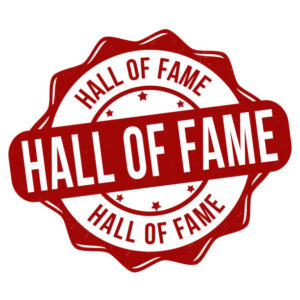When doing prospect research, most salespeople focus on the “who”. Though developing accurate prospect profiles is a must, it’s the “when” that pays big dividends. When you focus your sales efforts on the situations, crises, and milestones your customers face, you put yourself in front of those with an imminent need for your product. When you understand your customers’ timing cues, you’ll make a stronger case than simply pitching the right person at a time, when a million other things are competing for his or her attention.
Start to put your attention to the “when” over the “who”. When you focus too much on your prospect profiles alone, it’s easy to succumb to tunnel vision. You might zoom too far into on a particular industry or use case. Instead, focus on the situations when your product is needed, and be open minded to the entire community of prospects who experience this situation. This exercise is great for finding under-served customer groups.
Identifying your prospects’ timing cues can be challenging. Here are some timing-based questions to help guide your research:
- At what stage is your prospect’s company when they need your product?
- What crisis is your prospect experiencing when they invest in your product?
- What funding or revenue goal must your prospect reach before they can invest in your product?
- What is the seasonality of your prospect’s buying cycle?
- How long before your customer will be willing and able to re-purchase?
- Are there new decision makers involved? If so, what lead to their rise?
- When do your prospects change how they allocate money? What forces cause these shifts?
Here are 4 excellent, industry-agnostic prosecting resources that identify timing:
1. Crunchbase
While selling animated video services at IdeaRocket, I’ve had success using Crunchbase, “the world’s most comprehensive dataset of startup activity.” Crunchbase is great because it tells you when a company achieves funding, and for how much. From experience, I know that the company needs have funding in $10m+ range to engage us. When a newly-funded company fits the bill, I check to see if they have a homepage explainer or other videos. If it seems like we might be a good fit, I send snappy, conversation-starting email like this one:
Subject: Animated Explainer Video for Kramerica Industries (1)
Hi,
I came across Kramerica Industries recently on Crunchbase, and your product looks compelling. I thought I’d take a shot at reaching out (2).
Anyhow, we’re an NYC-based animation studio specializing in explainers for businesses, using a variety of high quality techniques. You can check out our portfolio here: http://www.idearocketanimation.com/animation-portfolio/.
I didn’t notice an explainer video on your homepage. Have you ever thought about creating one?
Best,
Dan
(1) After testing personalized and non-personalized subject lines, the former prevailed in respect to both open rate and response rate.
(2) I include this line because it shows a bit of humbleness. It implies that you’re not just shotgunning emails emails into the ether, but that you’re being deliberate and putting your pride on the line because you feel there is a genuine opportunity for the recipient.
From leveraging timing cues and sending concise cold emails like the above, I’m able to get a response rate of ~10%. Of that, I typically get conversations with over 3% of the people I contact. I usually close a couple deals a year through this process, and it’s all because the timing is right.
These metrics are especially compelling when you consider the fact I send 40-50% of these cold messages to generic company addressees ie. info@kramericaindustries.com. Though it’s better to identify a specific person, sometimes I go for quantity over quality, and it’s quicker to track down the general email. When the timing is ideal, the generic email address isn’t necessarily the black hole we expect.
2. Newsle
Newsle is an app that sends you a weekly feed detailing your Linkedin contacts and Facebook friends’ appearances as news results. After you connect on Linkedin with your prospects, Newsle will keep you up to speed on milestones like mergers, product launches, funding rounds, press (both bad and good), and other developments. Sending a simple “congrats” when something good happens works wonders. When Newsle alerts you to a crisis or challenge your prospect is dealing with, try sending them a quick message relating a similar experience you’ve dealt for another customer.
3. Quora
The Q&A platform is great for sharing knowledge about your product or service and directing high-likelihood prospects to your site. We’ve seen a higher conversion from visitors finding us through Quora than from any other website where we have a presence. Quora visitors are more likely to convert because people visit the site when they have some sort of problem that needs solving. They’re not just kicking tires.
4. YesWare
YesWare is an app that hooks up to Gmail. It let’s you store and use email templates and monitor their success by open and reply rate. The feature that makes it a superb timing-based resource is it’s email tracking of specific messages. You’ll get a near-real time update whenever someone opens a message you’ve elected to track, even if it was sent months before. This is great for knowing when to reach back out to a lead who stored and re-visited your cold email. Re-visiting an email is an excellent sign that a need for your product has arisen.
With prospecting, small changes can produce big improvements. Adopting a timing-based mindset will boost your sales because you’ll be compelled to focus on those with an immediate need. Are there other timing-based resources you use? Comment below and let us know.






1 comment
Join the conversationJeff thomson - September 1, 2017
The explainer videos production example for explaining crunch base is good
Comments are closed.